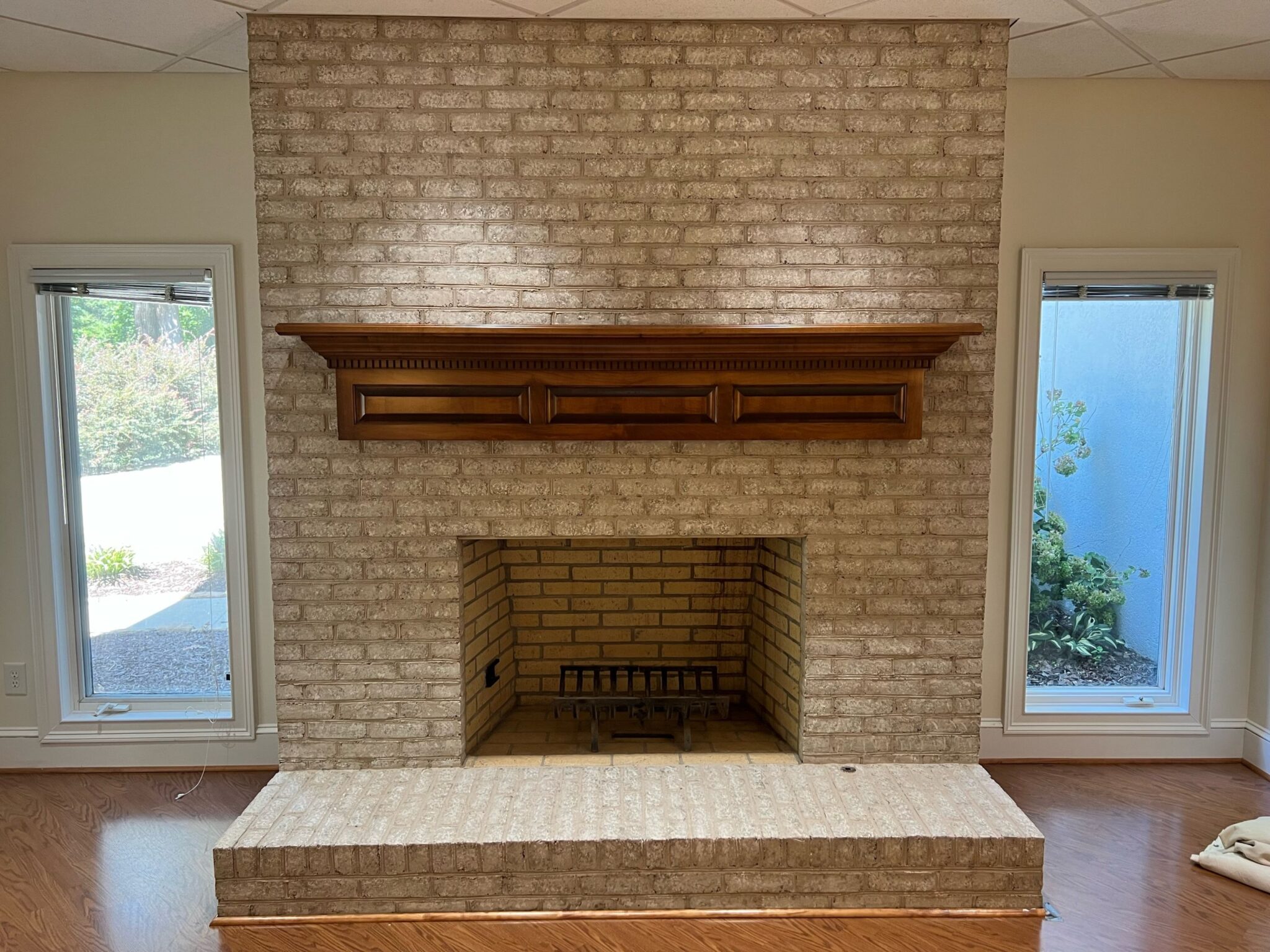While you may consider these products practically the same, they are incredibly different and give incredibly different end results. Consider the pros and cons of each before deciding which is best for your project.
Side-by-Side Summary
Page Contents
| Romabio | Giani | ||
|---|---|---|---|
| VOC Count | 0 | 85g/gal | |
| Allows Brick to Breathe | yes | no | |
| Color Choices | yes (7) | no | |
| Comes with Everything You Need | no | yes | |
| Indoor or Outdoor Use | yes | no (indoor only) | |
| Distressed Look Possible | yes | yes | |
| Full Coverage Possible? | yes | no (not in the nature of whitewash as a product) |
What is Limewash?
Limewash is a finish designed for raw wood or unsealed masonry and has been around for centuries. While a simple limewash just consists of water, salt, and hydrated lime, a more complex version is an aged lime putty mixed with natural pigments that the user dilutes with water to create a usable wash. As it dries, it can be distressed by spraying on water to remove some of the finish.
Limewash has incredible properties. It’s antimicrobial, antifungal, and an insecticide. It allows the surface it’s applied on to breathe naturally, which preserves the strength of that surface. It is equally applicable in indoor and outdoor settings and only looks better over time.
Limewash is also completely VOC free.
What is Whitewash?
Whitewash is a finishing technique for raw wood, masonry, and even previously painted surfaces. The user chooses a white or off-white paint color and dilutes it with water. Especially when used on brick, the user can remove excess paint with a rag to allow some of the natural brick to show through
Whitewash is just a mixture of white paint and water. It is better for brick than a solid coat of paint, but it doesn’t allow the brick to breathe naturally like limewash. Whitewash is not designed to hold up over time and will need to be reapplied in outdoor settings.
The VOC count of whitewash will depend on the type of paint used in the process.
The Classico Limewash by Romabio
Romabio’s limewash is crafted in Italy. It has all the fantastic qualities of limewash listed above, and it comes in seven different color choices.
While the product is mainly marketed to the exterior of brick homes, it can be used on any natural brick or stone, inside or outside.
The product is shipped in a paste form that needs to be diluted before application.
The Brick Transformations Kit by Giani
The whitewash kit by Giani comes with everything you need to complete your project including paint, lint-free cloths, drop cloths, etc. It is an interior product marketed for fireplaces.
The paint is low VOC and specifically designed for brick. The paint must be diluted with water before use.
Application Process
The Romabio limewash paste was about the same texture as softened butter. I expected it to be more difficult to work with (something along the lines of solid ice cream), but it was very easy to scoop out of the container.
It does take a little effort to get it thoroughly mixed with water. I would recommend using a metal mixing tool attached to a drill as opposed to a wooden stir stick.
As I applied it, the product looked very streaky, but the brushstrokes were much milder when the product dried.
Once the product was mostly dry, I started to distress it. I definitely recommend waiting as long as possible to start distressing.
Because the wash was not completely dry, even the drips from the water I sprayed on it removed a lot of product. I ended up using a lint-free cloth to blend the finish and get it looking the way I wanted.
The Giani paint was about the same texture as sour cream. When I was shaking the can, I thought it sounded really thin, but it wasn’t that much thinner than the Romabio. In fact, when diluted, both products had about the same consistency.
Again, it did take a little effort to get the product fully blended with the water. The company claims you can do it with just a stir stick, but I ended up having to really work the paint into the water with my paint brush.
Initially, the product gave a very full coverage. I did find it difficult to get the distressed look I was going for, but I think it would have been easier on real brick, which is much more porous. (I was using a faux brick board.)





